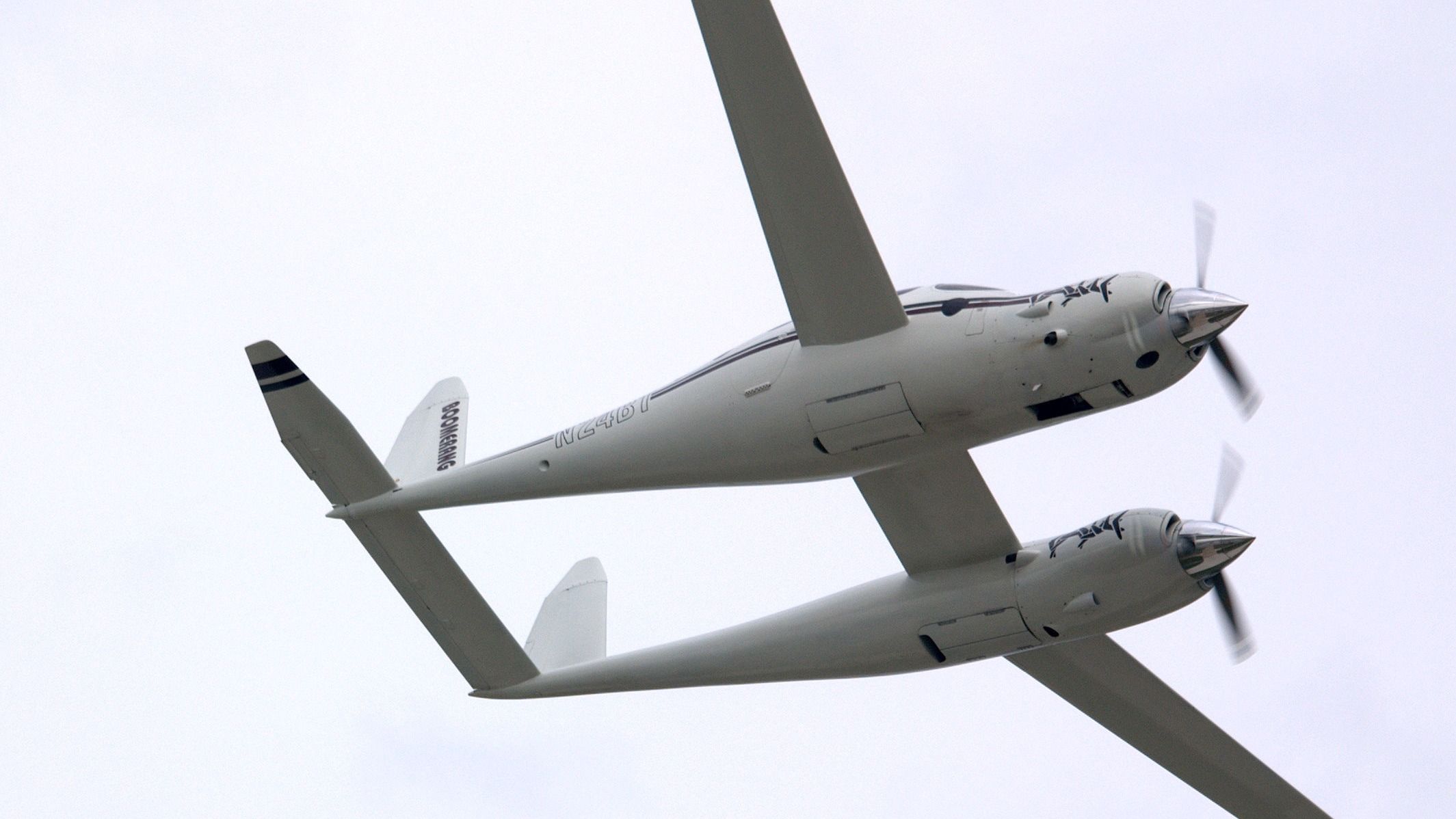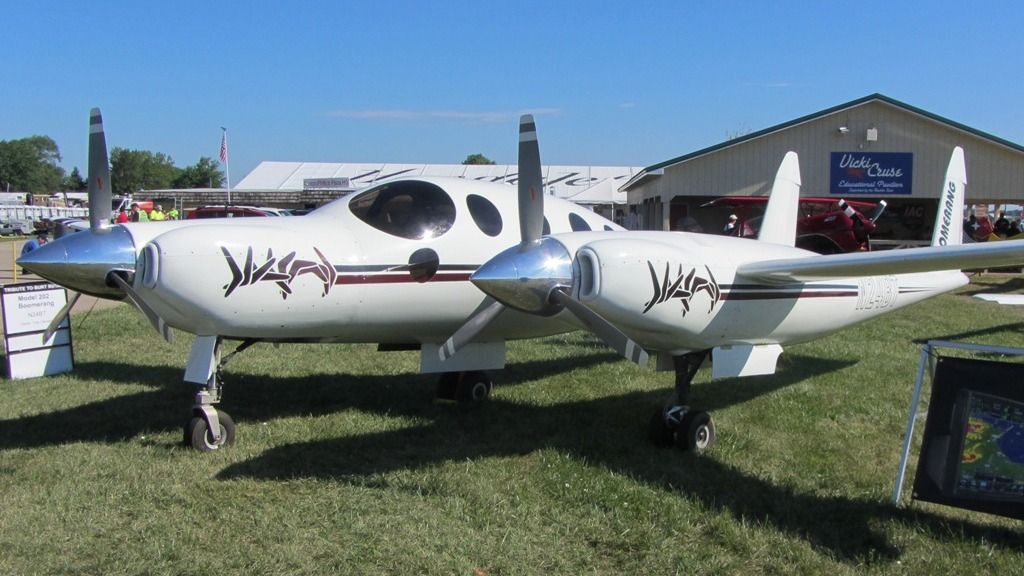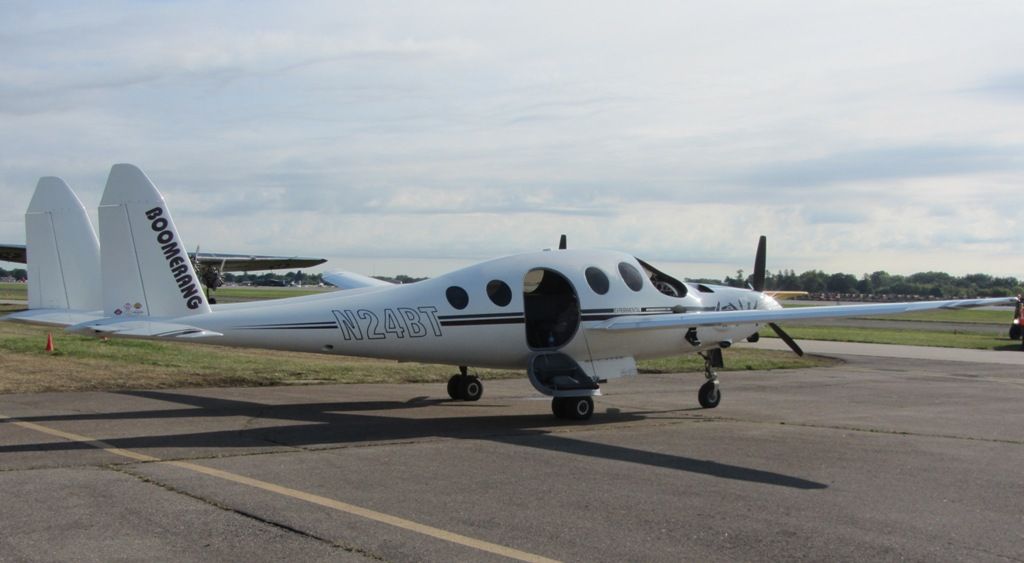Summary
- The Boomerang aircraft, designed by Burt Rutan, is an exceptional engineering marvel due to its asymmetrical double-fuselage design.
- Rutan’s goal was to create an aircraft that combines safety and efficiency by eliminating asymmetry during engine failure.
- The Boomerang is more efficient and has a higher top cruise speed than other twin-engine aircraft in its class.
Designed by aerospace engineer Burt Rutan, the Boomerang aircraft stands out as one of the most unique aircraft of its time. The one-of-a-kind experimental Rutan Model 202 Boomerang is particularly exceptional due to its asymmetrical double-fuselage arrangement.
Despite its striking appearance, the asymmetrical aircraft is capable of safe flight should either of its two engines fail and has drawn the attention of aviation geeks worldwide. Here, we take a closer look at this engineering marvel.
Why build the Boomerang?
There is a lot that doesn’t look right about Burt Rutan’s five-passenger Boomerang aircraft. The nine-meter Boomerang is a twinjet but looks like a trimotor from its appearance. To understand why the Boomerang was built the way it was, it is essential to talk about the person behind its design.
In the 1980s, the designer of the Boomerang, Burt Rutan, founded an aerospace company, Scaled Composites (now a part of Northrop Grumman), to develop experimental aircraft. Despite his busy schedule, Rutan found time to work on his passion project.
Rutan decided that his new aircraft design had to combine a couple of essential elements of his prior achievements in separate aircraft – the Catbird excelling in efficiency and the Defiant in safety.
For decades, the standard twin-engine aircraft design featured engines mounted on each wing, providing redundancy for safety. However, this design had its drawbacks. In the event of one engine failure, the aircraft faces reduced power and asymmetrical thrust, with more significant issues if the engines are far from the centerline.
Rutan wanted to eliminate the asymmetry experienced during an engine failure. Should one engine fail, the Boomerang continues to fly straight, freeing up the pilot to focus on more pressing issues.
The legendary engineer succeeded in creating the Boomerang and demonstrated that the asymmetrical aircraft can fly symmetrically and is more efficient than standard twin-engine planes in its class, including the Cessna 421 or Beechcraft Baron.
Boomerang’s specifications
The one-of-a-kind Boomerang aircraft is exceptional. Burt’s work at Scaled Composites put him on the leading edge of the transition to using carbon fiber for strong and lightweight structures. The Boomerang took full advantage of this technology. The double-fuselage aircraft was exceptionally light, with an empty weight of 1,070 kilograms.
Not surprisingly, having such a low weight, the aircraft is particularly efficient and can reach a maximum speed of 524 kilometers per hour at 18,000 feet. More impressively, the high wing loading contributes to the high top cruise speed of 489 kilometers per hour.
The aircraft’s right fuselage contains a cockpit and a passenger cabin, capable of accommodating four people, as well as the 210-horsepower engine. Meanwhile, the smaller, shorter left fuselage has space for luggage storage and the 200-horsepower engine.
Sources: Aerocrafted, Popular Mechanics Magazine



